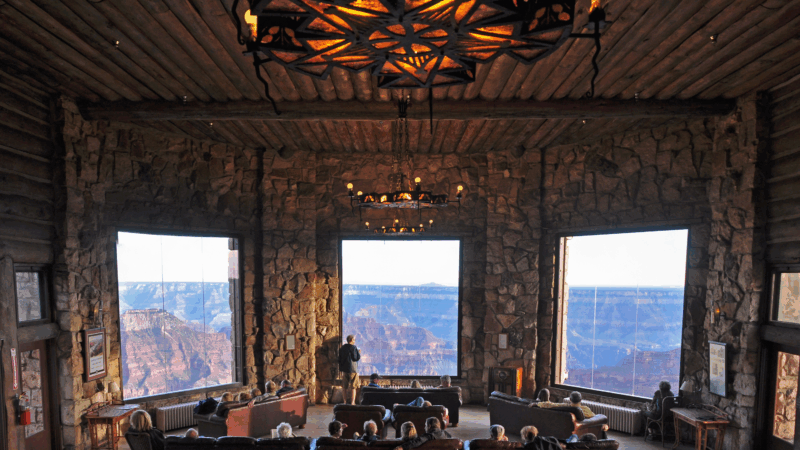Auburn University’s Rural Studio Brings 20K Houses To Hale County
For some residents of Alabama’s Black Belt, good housing can be hard to come by. In Hale County, 30 percent of the population lives below the poverty line — meaning an individual lives on less than $11,670 a year. A group from Auburn University wants to help by designing an efficient and inexpensive house that anyone could afford.
Driving into Hale County, you pass a lot of mobile homes, ramshackle homes with blue-tarped roofs and crumbling chimneys. But down this thin gravel road in Newbern, past a few rusted barns, are two new, brilliantly white houses. They look like the beginning of a subdivision — in the middle of a cow pasture.
Natalie Butts fiddles with the keys and opens the front door of one house.
“So you can see, this is the public space, the one bedroom on one side, and the bathroom and the kitchen in the main room,” Butts explains.
Butts used to be part of Auburn University’s Rural Studio, a project where architecture students design and build homes in Hale County. Now, she’s in charge of Rural Studio’s new venture, the $20,000 House Project – or 20K for short.
This is one of 20K’s prototype homes. Imagine a house shaped like a barbell with a room on either side of a narrow hall. It’s small, only 572 square feet, but cozy.
Andrew Freear, the director of Rural Studio, explains, “What we are really looking for is affordable and modest and at the same time beautiful and energy efficient and sustainable.”
Why $20,000? Freear capped building costs there with the idea that someone on Social Security could own their own home with a $100 monthly mortgage. To Freear, the 20K house is both a design experiment and a social obligation.
“There is no architect, no developer, no contractor, no builder that could afford to do that, so it’s an opportunity,” says Freear. “I do see it as a sort of moral responsibility to do it, no one else can do it.”
But Freear’s an architect, not a banker. Is it even possible — a $20,000 house with a $100 mortgage?
Samuel Clements is a professor of real estate at the University of Alabama. He says he thinks it’s a good idea.
He pulls a calculator out of a drawer and starts punching in numbers. He wants to take a crack at a $20,000 mortgage.
First, he tries a seven-year mortgage, but it’s too high. As is a 15-year mortgage. But 30 years works.
“101 dollars,” Clements announces, “so you could get a 30 year mortgage.”
Clements thinks it would be an attractive risk for a banker.
“Just the fact that it is 20,000 instead of 100,000. That’s less risk, just cause it’s a smaller amount of money,” Clements explains. “If you or I were loaning money, we would much rather lose $20,000 rather than $100,000, right?”
Mortgages for the houses don’t exist — yet. Rural Studio and Freear have challenged Regions Bank to create a mortgage. Regions Bank tells WBHM they’re still working on it.
For Freear, the 20K houses can change how people feel about their lives.
Conner Bailey is a professor of Rural Sociology at Auburn University, and he’s been researching housing in the Black Belt for decades. Bailey thinks, housing is more than just four walls and a roof.
“Its a place where we live,” Bailey says. “There’s a personal dignity involved. Affordable housing, secure housing, is something that everyone should have access to in this country.”
Slowly, Rural Studio is helping to expand that access across Alabama.
Currently three non-profits in Alabama are building the 20K houses to check the designs and to see how potential residents react. Butts says construction will begin in the next few weeks.
With temporary protections for some Afghans set to expire, appeals court steps in
An appeals court late Monday stepped in to keep in place protections for nearly 12,000 Afghans that have allowed them to work in the U.S. and be protected from deportation.
A wildfire destroyed the historic Grand Canyon Lodge. It burned down once before
The Grand Canyon Lodge is the only hotel on the park's North Rim, which is closed for the rest of the season due to wildfire risk. The hotel was already rebuilt once, after a kitchen fire in 1932.
Why the Federal Reserve’s building renovations are attracting the White House’s ire
The Fed's $2.5 billion headquarters renovation is attracting mounting criticism from the Trump administration, which had been already attacking the central bank for not cutting interest rates.
Supreme Court says Trump’s efforts to close the Education Department can continue
The Trump administration had appealed a decision that had directed it to stop gutting the U.S. Education Department and to reinstate many of the workers the government had laid off.
Trump tells supporters not to ‘waste time’ on Epstein files. They’re not happy
President Trump is facing backlash from his supporters and opponents alike for how his administration has handled the release of evidence surrounding the death of disgraced financier Jeffrey Epstein.
24 states sue Trump admin to unfreeze more than $6 billion in education grants
The lawsuit comes two weeks after the Trump administration first notified states it was withholding previously approved funds for migrant education, before- and after- school programs and more.








